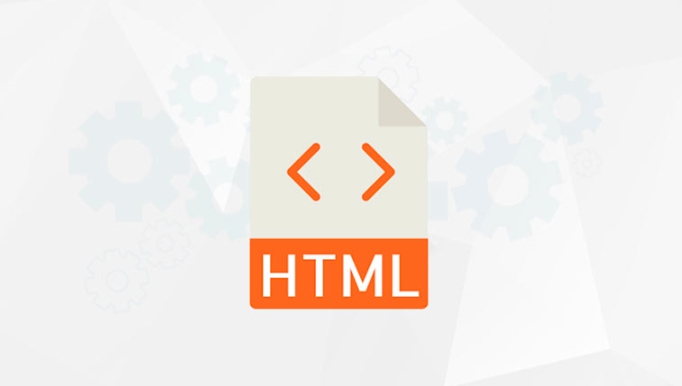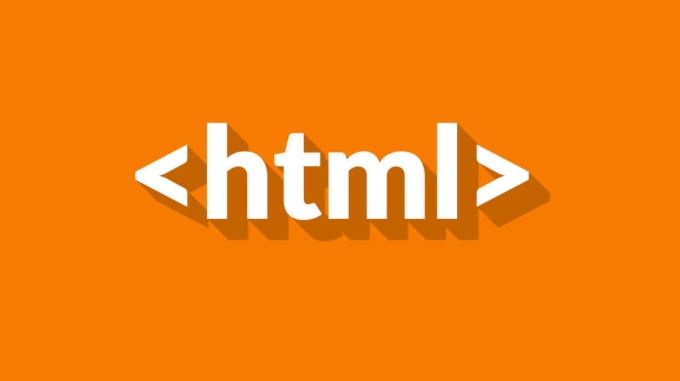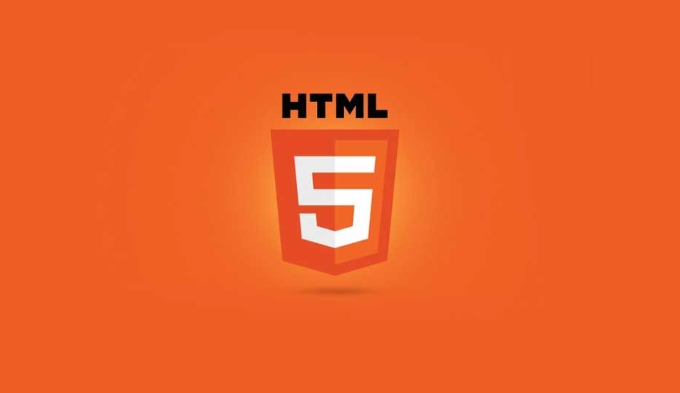 Web Front-end
Web Front-end
 HTML Tutorial
HTML Tutorial
 Implementing lists in HTML: Ordered vs. Unordered and nested lists.
Implementing lists in HTML: Ordered vs. Unordered and nested lists.
Implementing lists in HTML: Ordered vs. Unordered and nested lists.
Jul 02, 2025 pm 04:05 PMIn HTML, lists are used to organize content. Ordered lists (
<ol>) are suitable for sequential entries, such as step instructions; unordered lists ( <ul>) are suitable for sequential entries, such as shopping lists; nested lists show hierarchies by including new lists in list items, such as submenu under navigation menus. When choosing, consider whether the order is important, and note that the nesting level should not be too deep, use appropriate tags, and cooperate with CSS control styles, while avoiding semantic errors and accessibility issues.
In HTML, lists are an important way to organize content. Common Ordered List and Unordered List are used to express sequential and unordered entry information respectively. If you want to make the structure clearer and more hierarchical, you can also use nested lists .

Ordered List vs. Unordered List: When to use which one?
Simply put:
 <ul>
<ul> Ordered list ( <ol></ol> ) : Applicable to content that needs to emphasize order, such as step descriptions, rankings, etc.
<ol> <li>Step 1: Open the browser</li> <li>Step 2: Enter the URL</li> <li>Step 3: Click to search</li> </ol>
Unordered list ( <ul> ) : Suitable for items without a specific order, such as shopping lists, feature introductions, etc.

<ul> <li>Milk</li> <li>Egg</li> <li>Bread</li> </ul>
When choosing, you can ask yourself a question: "Is the order of these entries important?" If so, use <ol> ; otherwise use <ul> .
How to create nested lists?
A nested list is to include a list in a list item, which is suitable for displaying hierarchical structures or classified content.
For example, if you want to list different pages and their subpages of a website, you can write it like this:
<ul>
<li>Home </li>
<li>Products<ul>
<li>Product A</li>
<li>Product B</li>
</ul>
</li>
<li>Contact Us</li>
</ul> As you can see, <ul> or <ol> can appear as child elements of another list. Pay attention to indentation when nesting. Although HTML is not mandatory, it helps to read the code.
A few suggestions:
<ul><ol> and <ul> );List common misunderstandings and optimization tips
Sometimes newbies use the list incorrectly or ignore semantics and accessibility. Here are some easy points to ignore:
<ul><ul> but do not set role="navigation" ;Correct ways to do this include:
<ul><dl> (Definition List).For example, a list with styles might be as follows:
<ul class="menu"> <li><a href="/">Home</a></li> <li><a href="/about">About Us</a></li> </ul>
Then set the margins, colors and other styles of .menu li through CSS.
Basically that's it. HTML lists may seem simple, but they are not easy to use in actual development. Master the basic syntax and usage scenarios, pay attention to clear structure and accurate semantics, and you can write code that is both practical and easy to maintain.
The above is the detailed content of Implementing lists in HTML: Ordered vs. Unordered and nested lists.. For more information, please follow other related articles on the PHP Chinese website!

Hot AI Tools

Undress AI Tool
Undress images for free

Undresser.AI Undress
AI-powered app for creating realistic nude photos

AI Clothes Remover
Online AI tool for removing clothes from photos.

Clothoff.io
AI clothes remover

Video Face Swap
Swap faces in any video effortlessly with our completely free AI face swap tool!

Hot Article

Hot Tools

Notepad++7.3.1
Easy-to-use and free code editor

SublimeText3 Chinese version
Chinese version, very easy to use

Zend Studio 13.0.1
Powerful PHP integrated development environment

Dreamweaver CS6
Visual web development tools

SublimeText3 Mac version
God-level code editing software (SublimeText3)

Hot Topics
 How do I stay up-to-date with the latest HTML standards and best practices?
Jun 20, 2025 am 08:33 AM
How do I stay up-to-date with the latest HTML standards and best practices?
Jun 20, 2025 am 08:33 AM
The key to keep up with HTML standards and best practices is to do it intentionally rather than follow it blindly. First, follow the summary or update logs of official sources such as WHATWG and W3C, understand new tags (such as) and attributes, and use them as references to solve difficult problems; second, subscribe to trusted web development newsletters and blogs, spend 10-15 minutes a week to browse updates, focus on actual use cases rather than just collecting articles; second, use developer tools and linters such as HTMLHint to optimize the code structure through instant feedback; finally, interact with the developer community, share experiences and learn other people's practical skills, so as to continuously improve HTML skills.
 How do I use the element to represent the main content of a document?
Jun 19, 2025 pm 11:09 PM
How do I use the element to represent the main content of a document?
Jun 19, 2025 pm 11:09 PM
The reason for using tags is to improve the semantic structure and accessibility of web pages, make it easier for screen readers and search engines to understand page content, and allow users to quickly jump to core content. Here are the key points: 1. Each page should contain only one element; 2. It should not include content that is repeated across pages (such as sidebars or footers); 3. It can be used in conjunction with ARIA properties to enhance accessibility. Usually located after and before, it is used to wrap unique page content, such as articles, forms or product details, and should be avoided in, or in; to improve accessibility, aria-labeledby or aria-label can be used to clearly identify parts.
 How do I minimize the size of HTML files?
Jun 24, 2025 am 12:53 AM
How do I minimize the size of HTML files?
Jun 24, 2025 am 12:53 AM
To reduce the size of HTML files, you need to clean up redundant code, compress content, and optimize structure. 1. Delete unused tags, comments and extra blanks to reduce volume; 2. Move inline CSS and JavaScript to external files and merge multiple scripts or style blocks; 3. Simplify label syntax without affecting parsing, such as omitting optional closed tags or using short attributes; 4. After cleaning, enable server-side compression technologies such as Gzip or Brotli to further reduce the transmission volume. These steps can significantly improve page loading performance without sacrificing functionality.
 How do I create a basic HTML document?
Jun 19, 2025 pm 11:01 PM
How do I create a basic HTML document?
Jun 19, 2025 pm 11:01 PM
To create a basic HTML document, you first need to understand its basic structure and write code in a standard format. 1. Use the declaration document type at the beginning; 2. Use the tag to wrap the entire content; 3. Include and two main parts in it, which are used to store metadata such as titles, style sheet links, etc., and include user-visible content such as titles, paragraphs, pictures and links; 4. Save the file in .html format and open the viewing effect in the browser; 5. Then you can gradually add more elements to enrich the page content. Follow these steps to quickly build a basic web page.
 How do I create checkboxes in HTML using the element?
Jun 19, 2025 pm 11:41 PM
How do I create checkboxes in HTML using the element?
Jun 19, 2025 pm 11:41 PM
To create an HTML checkbox, use the type attribute to set the element of the checkbox. 1. The basic structure includes id, name and label tags to ensure that clicking text can switch options; 2. Multiple related check boxes should use the same name but different values, and wrap them with fieldset to improve accessibility; 3. Hide native controls when customizing styles and use CSS to design alternative elements while maintaining the complete functions; 4. Ensure availability, pair labels, support keyboard navigation, and avoid relying on only visual prompts. The above steps can help developers correctly implement checkbox components that have both functional and aesthetics.
 How do I use the element to represent the footer of a document or section?
Jun 25, 2025 am 12:57 AM
How do I use the element to represent the footer of a document or section?
Jun 25, 2025 am 12:57 AM
It is a semantic tag used in HTML5 to define the bottom of the page or content block, usually including copyright information, contact information or navigation links; it can be placed at the bottom of the page or nested in, etc. tags as the end of the block; when using it, you should pay attention to avoid repeated abuse and irrelevant content.
 How has HTML evolved over time, and what are the key milestones in its history?
Jun 24, 2025 am 12:54 AM
How has HTML evolved over time, and what are the key milestones in its history?
Jun 24, 2025 am 12:54 AM
HTMLhasevolvedsignificantlysinceitscreationtomeetthegrowingdemandsofwebdevelopersandusers.Initiallyasimplemarkuplanguageforsharingdocuments,ithasundergonemajorupdates,includingHTML2.0,whichintroducedforms;HTML3.x,whichaddedvisualenhancementsandlayout
 How do I use the tabindex attribute to control the tab order of elements?
Jun 24, 2025 am 12:56 AM
How do I use the tabindex attribute to control the tab order of elements?
Jun 24, 2025 am 12:56 AM
ThetabindexattributecontrolshowelementsreceivefocusviatheTabkey,withthreemainvalues:tabindex="0"addsanelementtothenaturaltaborder,tabindex="-1"allowsprogrammaticfocusonly,andtabindex="n"(positivenumber)setsacustomtabbing





